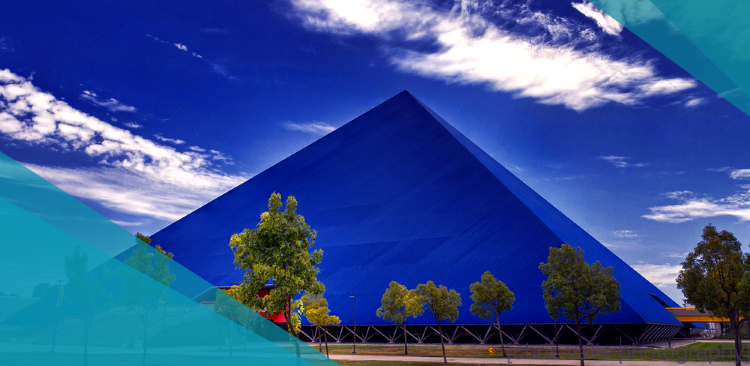Call for Papers: IEEE Green Energy and Smart Systems Conference (IGESSC 2021, Currently IEEE GESS)
Date: November 1-2, 2021
Location: California State University, Long Beach, CA 90840, USA
http://sites.ieee.org/clas-sysc
The steering committee has decided to hold the 2021 conference “virtual”. All accepted papers for the IGESSC (Currently IEEE GESS) will be submitted for inclusion in IEEE Xplore Digital Library after they are presented at the virtual conference in November.
Conference has the following topics but not limited to:
Smart Systems
• Machine Learning for Smart Systems: Smart Building, Smart Campus, and Smart City
• Communication, Networking, and Digital Signal Processing
• Internet-of-things and Green Computation
• Smart Grid, Big Data, Security Cloud Computing
• Smart Satellite/Space Communications
• Data-Driven Complex Systems for Intrusion, Detection, and Optimization
• Intelligent Transportation Systems and Smart EV charging Systems
Green Energy and Power
· Safe and Resiliency through Community-Scale Micro-Grids
· Modeling Cyber-physical Smart Grids and Demand Response Management
· Energy Storage, Fuel Cell Technologies, and Trends
· Electrical Vehicles, Grid to Vehicle (G2V) and Vehicle to Grid (V2G)
· Solar Power Systems, Energy and Water Management and Sustainability
· Secure and Advanced Metering Infrastructure
· Wildfire Detection
Submission & Publication: All accepted papers in Technical Track will be published in IGESSC (Currently IEEE GESS) proceedings by IEEE. All submissions should be formatted according to the IEEE standard Word or Latex Template.
Technical Track:
Full paper (4-6 pages) submission deadline: June 1, 2021 June 29, 2021 (Tue)
Full paper acceptance notification: Aug. 17, 2021
Camera-ready version: Oct 12, 2021
Student Track for Poster Presentation Only (Not for publication in IEEE Xplore):
Submission deadline for student paper for posters (2-4 pages): June 1, 2021 June 29, 2021 (Tue)
Acceptance notification: Aug. 17, 2021
Poster-Ready Version: Oct 12, 2021
1-Day Workshop 11/02/2021: Smart Systems and Green Energy Systems
*Special Issue of Sensors Journal:
Extended versions of selected papers presented at IGESSC (Currently IEEE GESS) will be recommended for publication in a special issue of Sensors, the MDPI open access journal (Article Processing Charge applies).
IGESSC (Currently IEEE GESS) 2021 Final Program
Conference – November 1, 2021 (Monday)
9:00 AM – 6:00 PM (Virtual)
Track A
| Keynote Zoom Link: https://csulb.zoom.us/j/88068964214 Meeting ID: 880 6896 4214 | ||||
| 9:00 AM | Opening Remark | – Jinny Rhee (California State University, Long Beach) | Henry Yeh Student Assistant: Gerardo Sanchez | |
| 9:05 AM | Keynote | Application of Data Analytics to Assist Human Decision-Making – Paul C. Hershey (Raytheon Technologies Company, USA) | ||
| 10:05 AM | Break | |||
| Time | Paper # | Title and Authors | Session | Chair |
| Power Systems Session Zoom Link: https://csulb.zoom.us/j/81885257517 Meeting ID: 818 8525 7517 | ||||
| 10:20 AM | 22 | Potential Implementation of EVs–Features, Challenges and User Perspective Saleh Alotaibi, Siddig Omer (University of Nottingham, UK), Sulaiman Aljarallah (Technical and Vocational Training Corporation, UK) and Yuehong Su (University of Nottingham, UK) | Power Systems | Saleh Al Jufout |
| 10:45 AM | 16 | A Deep Learning Model for Forecasting Photovoltaic Energy with Uncertainties Mostafa Zaman (Virginia Commonwealth University, USA), Sujay Saha (University of Dhaka, Bangladesh), Roja Eini and Sherif Abdelwahed (Virginia Commonwealth University, USA) | ||
| 11:10 AM | 20 | Uncertainty-Based Scheduling of Multi-Chiller System with Thermal Energy Storage Under Real-Time Prices Milad Sadat-Mohammadi, Javad Khazaei and Somayeh Asadi (Penn State University, USA) | ||
| 11:35 AM | 26 | Artificial Electric Field Algorithm for Optimum PMU Placement Batool Al-Khraisat, Ali Al-Dmour (Mutah University, Jordan) and Khaled Al-Maitah (EDCO, Jordan) | ||
| 12:00 PM | Lunch Break | |||
| Power Systems Session Zoom Link: https://csulb.zoom.us/j/89803199981 Meeting ID: 898 0319 9981 | ||||
| 1:00 PM | 35 | Optimal Management of Active and Reactive Power of Smart Inverters of Solar Units to Prevent Overvoltage Saeideh Khadem Haghighian, Mohammad Talebi (California State University of Long Beach, USA), Tohid Rahimi (Shondong University, China) and Hen-Geul Yeh (California State University of Long Beach, USA) | Power Systems | Chair: Keyue Smedley Co-Chair: Saleh Al Jufout |
| 1:25 PM | 52 | Full-Range Regulation Method for Half-Bridge Series Resonant Converters Jiayi Kong (China University of Mining and Technology, Beijing, China) and Keyue Smedley (University of California, Irvine, USA) | ||
| 1:50 PM | 30 | Enhancing the Prediction Accuracy of Solar Power Generation using a Generative Adversarial Network Kundjanasith Thonglek, Kohei Ichikawa, Keichi Takahashi (Nara Institute of Science and Technology, Japan), Chawanat Nakasan (Kanazawa University, Japan), Kazufumi Yuasa, Tadatoshi Babasaki (NTT Facilities, Inc., Japan) and Hajimu Iida (Nara Institute of Science and Technology, Japan) | ||
| Power Systems Session Zoom Link: https://csulb.zoom.us/j/86468652208 Meeting ID: 864 6865 2208 | ||||
| 2:20 PM | 33 | Optimization and Data Quality Management for Linear Security Analysis Under Limited Synchrophasor Observability Backer Abu-Jaradeh and Mohammed Beshir (University of Southern California, USA) | Power Systems | Chair: Labib Daloub Co-Chair: M. Mozumdar |
| 2:45 PM | 10 | Self-Shadow Analysis of Bifacial Solar Photovoltaic and its Implication on View Factor Computation Marzia Alam, Mehreen Saleem Gul (Heriot-Watt University, UK) and Tariq Muneer (Edinburgh Napier University, UK) | ||
| 3:10 PM | 47 | Transient Optimization of a Segmented Variable Area Leg Geometry-Based Solar Thermoelectric Generator Ramesh Kumar (Malaviya National Institute of Technology Jaipur, India), Chika Maduabuchi (University of Nigeria, Nsukka, Nigeria), Ravita Lamba, Manish Vashishtha and Sushant Upadhyaya (Malaviya National Institute of Technology Jaipur, India) | ||
| Power Systems Session Zoom Link: https://csulb.zoom.us/j/83141071625 Meeting ID: 831 4107 1625 | ||||
| 3:40 PM | 51 | Grid Load Mitigation in EV Fast Charging Stations Through Integration of a High-Performance Flywheel Energy Storage System with CFRP Rotor Armin Buchroithner, Rupert Preßmair, Peter Haidl, Hannes Wegleiter (Institute of Electrical Measurement and Sensor Systems, Graz University of Technology, Austria), Bernd Thormann, Thomas Kienberger (Energy Network Technology, Montanuniversität Leoben, Austria), Peter Auer and Josef Domitner (Institute of Electrical Measurement and Sensor Systems, Graz University of Technology, Austria) | Power & Smart Systems | Chair: Tohid Rahimi Co-Chair: Ava Hedayatipour |
| 4:05 PM | 46 | Predicting PV Power Generation using SVM Regression Richard Nguyen, Yu Yang, Annas Tohmeh and Hen-Geul Yeh (California State University of Long Beach, USA) | ||
| 4:30 PM | 18 | Modeling and Optimization of an Alkaline Water Electrolysis for Hydrogen Production Katherine Stewart, Laurianne Lair, Brenda De La Torre, Nguyen Phan (California State University Long Beach, USA), Rupak Das (E2 Consulting Engineers, USA), Demar Gonzalez (Southern California Gas Company, USA), Roger Lo and Yu Yang (California State University of Long Beach, USA) | ||
| Award Ceremony Zoom Link: https://csulb.zoom.us/j/81013024517 Meeting ID: 810 1302 4517 | ||||
| 5:30 PM | Best Paper and Service Award Ceremony: | Henry Yeh Student Assistant: Carlos Lazzo |
Track B
| Keynote Zoom Link: https://csulb.zoom.us/j/88068964214 Meeting ID: 880 6896 4214 | ||||
| 9:00 AM | Opening Remark | – Jinny Rhee (California State University, Long Beach) | Henry Yeh Student Assistant: Gerardo Sanchez | |
| 9:05 AM | Keynote | Application of Data Analytics to Assist Human Decision-Making – Paul C. Hershey (Raytheon Technologies Company, USA) | ||
| 10:05 AM | Break | |||
| Time | Paper # | Title and Authors | Session | Chair |
| Smart Systems Session Zoom Link: https://csulb.zoom.us/j/84439472838?pwd=Z3dualp0bkJ4bHIxMUJsOWRaRkJrZz09 Meeting ID: 844 3947 2838 Passcode: 156078 | ||||
| 10:20 AM | 21 | Network-Impact of Platoon Size and Penetration at City-Scale Robert Thomas, Nathan Huynh and José Vidal (University of South Carolina, USA) | Smart Systems | Hossein Jula |
| 10:45 AM | 27 | Low-Cost, No-Touch IoT Security Nick Tredennick, Paul Wu (Jonetix, USA), Harry Peterson and John Peterson (Siloxit Corporation, Singapore) | ||
| 11:10 AM | 29 | Neural Network Delay Estimation with Inclusion of Heavy Goods Vehicular Data Christopher Rosas, John Lee, Hossein Jula and Anastassios Chassiakos (California State University Long Beach, USA) | ||
| 11:35 AM | 31 | RT-OTP: A Secure, EPC-Compliant, Single Transfer Protocol for RFID Tags Jerry Trahan and Vanya Cherneva (Louisiana State University, Baton Rouge, USA) | ||
| 12:00 PM | Lunch Break | |||
| Smart Systems Session Zoom Link: https://csulb.zoom.us/j/82287720234 Meeting ID: 822 8772 0234 | ||||
| 1:00 PM | 32 | TP-OTP: Two-Party, Ownership Transfer Protocol for RFID Tags Based on Quadratic Residues Vanya Cherneva and Jerry Trahan (Louisiana State University, Baton Rouge, USA) | Smart Systems | Ava Hedayatipour |
| 1:25 PM | 34 | End-to-End Management System Framework for Smart Public Buildings Ivo Jesus, Tomás Pereira, Pedro Marques, João Sousa, Luís Perdigoto and Paulo Coelho (Polytechnic of Leiria, Portugal) | ||
| 1:50 PM | 36 | A Water Behavior Dataset for an Image-Based Drowning Solution Saifeldin Hasan, John Joy, Fardin Ahsan, Huzaifa Khambaty, Manan Agarwal and Jinane Mounsef (Rochester Institute of Technology, Dubai, United Arab Emirates) | ||
| Smart Systems Session Zoom Link: https://csulb.zoom.us/j/86976366115 Meeting ID: 869 7636 6115 | ||||
| 2:20 PM | 38 | Improvement of Performance of K-Nearest Neighbors Used to Classify Sharks into Behaviors Ibrahim Ali, Hen-Geul Yeh and Yu Yang (California State University of Long Beach, USA) | Smart Systems | Yu Yang |
| 2:45 PM | 39 | Smart Cities: A Focus on Intelligent Transportation Systems Abigail Nicole Balisi, Hossein Jula and Anastasios Chassiakos (California State University of Long Beach, USA) | ||
| 3:10 PM | 44 | Estimation of Greenhouse Gas Emission Reduction from Shared Micromobility System Helinyi Peng, Yuuki Nishiyama and Kaoru Sezaki (University of Tokyo, Japan) | ||
| Smart Systems Session Zoom Link: https://csulb.zoom.us/j/87216735859 Meeting ID: 872 1673 5859 | ||||
| 3:40 PM | 45 | Deep Learning for Shark Detection Tasks Wenlu Zhang, Xinyi Chen, Dhara Bhadani, Patrick Rex, Yu Yang, Christopher Lowe and Hen-Geul Yeh (California State University of Long Beach, USA) | Smart Systems | Sean Kwon |
| 4:05 PM | 48 | Adaptive Inter-Beam Granularity and Beamwidth Adjustment for 5G Beam Selection and Management Leah Omaiye, Irene de Gruijter and Sean Kwon (California State University of Long Beach, USA) | ||
| 4:30 PM | 49 | Deep Learning based Real-Time Image Upscaling for Limited Data Rate and Prevalent Resources Nathaniel Tovar and Sean Kwon (California State University of Long Beach, USA) | ||
| 4:55 PM | 50 | Traffic Delay Modeling for an Intersection in the City of Long Beach, CA, using Vissim John Krallman, Nicole Balisi, Martin Caro Garcia, Hossein Jula and Anastassios Chassiakos (California State University of Long Beach, USA) | ||
| Award Ceremony Zoom Link: https://csulb.zoom.us/j/81013024517 Meeting ID: 810 1302 4517 | ||||
| 5:30 PM | Best Paper and Service Award Ceremony: | Henry Yeh Student Assistant: Carlos Lazzo |
Workshop – November 2, 2021 (Tuesday)
9:00 AM – 5:00 PM (Virtual)
| Time | Workshop # | Presentation Title | Session | Session Chair |
| Session Zoom Link: https://csulb.zoom.us/j/89697613780 Meeting ID: 896 9761 3780 | ||||
| 9:00 AM | 1 | A Security-by-Design Approach to IoT Deployment in Power Sector Dr. Jolly Wong (Technology Consultant, Hong Kong) | Smart Systems | Sean Kwon |
| 9:40AM | 2 | Learning Dynamics by Smart Systems Hsiao-Chun Wu (Professor, Louisiana State University, USA) | ||
| 10:20 AM | Break | |||
| Session Zoom Link: https://csulb.zoom.us/j/86154699632 Meeting ID: 861 5469 9632 | ||||
| 10:40 AM | 3 | Clean Transportation Planning, Research, and Development at the California Energy Commission Kiel Pratt & Ben Wender (California Energy Commission, USA) | Smart Systems | Yu Yang |
| 11:20 AM | 4 | Fog/Edge Computing, 5G overview and 6G Initiatives Zhensheng Zhang (Technology Consultant, San Diego, USA) | ||
| 12:00 PM | Lunch Break | |||
| Session Zoom Link: https://csulb.zoom.us/j/82184673680 Meeting ID: 821 8467 3680 | ||||
| 1:00 PM | 5 | Deep Learning with MATLAB Aycan Hacioglu (MathWorks, USA) | Smart Systems | Henry Yeh |
| 3:00 PM | Break | |||
| 3:30 PM | 6 | Deep Learning with MATLAB Aycan Hacioglu (MathWorks, USA) | Smart Systems | Henry Yeh |
Opening Remark
Dr. Jinny Rhee, Dean, CSULB College of Engineering
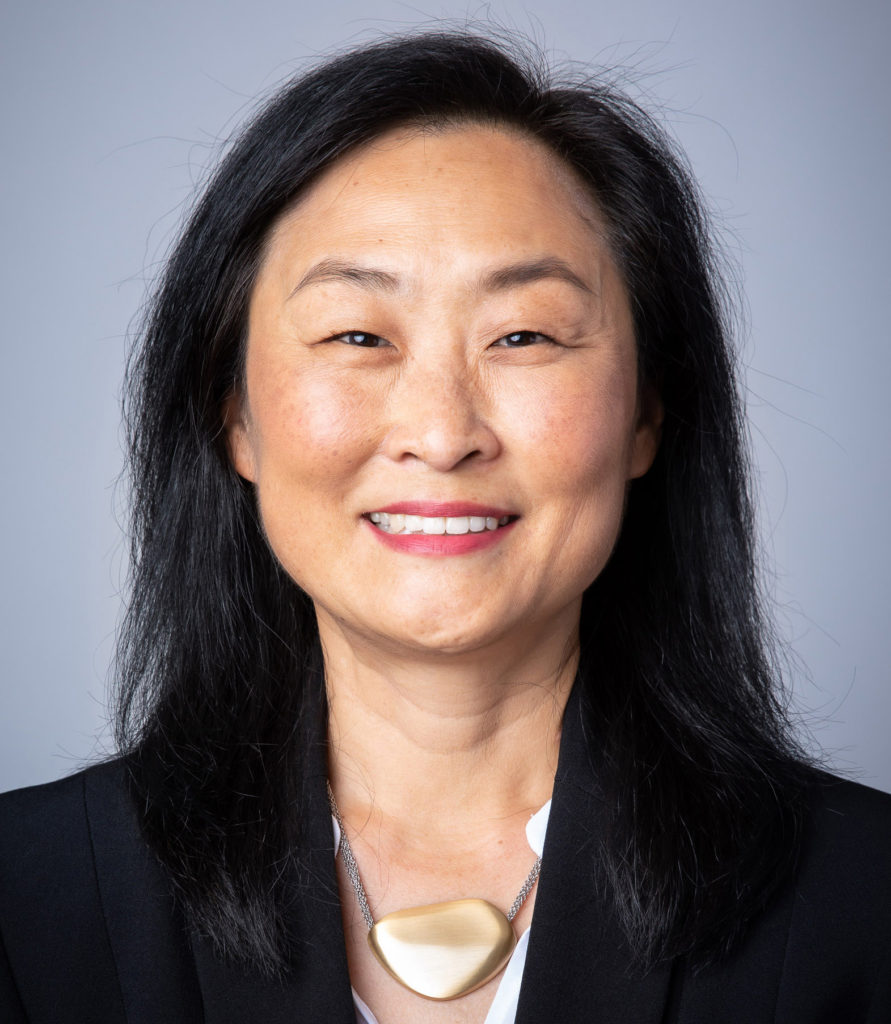
Speaker Bio:
Dr. Jinny Rhee joined the CSULB College of Engineering as Dean in July 2021, bringing to The Beach years of experience developing innovative student success and faculty-development programs and forging strong relationships with industry leaders, alumni, and community partners.
Dr. Rhee comes to CSULB from San Jose State University, where, as Associate Dean of the Charles W. Davidson College of Engineering, she led programs that raised graduation rates, increased faculty and student diversity, improved academic advising, and pioneered staff and faculty workshops on anti-racism and microaggressions.
As Associate Dean, Dr. Rhee administered the $1.8 million Silicon Valley Engineering Scholarship program, and was involved in over $9.2 million in philanthropy to the SJSU College of Engineering and its affiliated programs, engaging corporate, alumni, and community partners.
She developed Engineering Programs in Community Service (EPICS @SJSU) to attract underrepresented minorities and women to engineering, and helped initiate the Industrial Technology Network Security Apprenticeship Program with Cisco Systems.
Dr. Rhee received her B.S. (’89), M.S. (’90), and Ph.D. (’95) degrees, all in mechanical engineering, from Stanford University. Her research interests include renewable energy, thermal management and student success strategies, particularly for engineering and STEM majors. She is the author of numerous peer-reviewed articles on engineering education, student success, and mechanical engineering.
Dr. Rhee is a member of the EPICS Consortium Institution, California Engineering Liaison Council (CAELC), American Society of Engineering Education (ASEE), American Society of Mechanical Engineering (ASME), and Institute of Electrical and Electronics Engineers (IEEE). She was the recipient of the SJSU College of Engineering’s 2013 Applied Materials Teaching Excellence Award, and from 1995-2002 was sole proprietor of Rhee Thermosciences. You can follow her on Twitter @DeanRheeCSULB.
Keynote Speaker
Application of Data Analytics to Assist Human Decision-Making
Paul C. Hershey, Ph.D.
Both commercial and military systems are rapidly evolving into complex Systems of Systems (SoS) that incorporate advanced technologies, such as Machine Learning (ML) and Artificial Intelligence (AI). Associated with these systems are emerging behaviors that require decision support beyond the capacity of human reasoning alone. The field of Data Analytics provides methodologies to assist human decision-making with respect to complex SoS.
Data analytics is the science of analyzing raw data in order to make conclusions about the information derived from it. In fact, many data analytics methods have been designed to autonomously transform raw data into information for human consumption. This information can then be used to optimize processes and increase the overall efficiency of a business or system. The data analytics process includes the following steps: 1. Determine data requirements; 2. Define the process for collecting data; 3. Organize that data so it can be analyzed; 4. Clean the data before analysis; 5. Perform analysis and generate results to assist with human decision-making. Data analytics is broken down into four basic types: Descriptive analytics describes what has happened over a given time period; Diagnostic analytics focuses on why something happened; Predictive analytics describes what is likely going to happen in the near term; Prescriptive analytics suggests a course of action. Data analytics assist human decision making for quality control systems in the financial world. The retail industry also uses data analytics to meet the ever-changing demands of shoppers. The travel and hospitality industries have also adopted data analytics to assist with human decision making where quick response times are critical. Likewise, the healthcare industry applies data analytics to assist doctors and nurses with time-critical decisions on which life and death depend1.
This presentation provides an in depth review of the concept of “Data Analytics” methods, such as data analysis, data fusion, data storage, data sources, infrastructure and technology, screening and filtering algorithms, machine learning, and complexity; and it discusses how each of these assists human decision making. The presentation then describes specific commercial and military use cases where these methods can assist human decision-making. These use case include:
- Information Collection Architecture (ICA) [4]-[6]. This data analytics use case focuses on providing accurate and timely information collection as the primary enabler for effective high-speed data network management and services. Information assessment for these emerging networks is computationally intensive to the point of stressing both technology and network architecture. Commercial companies such as IBM and British Telecom have used the ICA for high-speed electrical and optical network analysis.
- Multifactor Information Distributed Analytics Technology Aide (MiData). This use case applies data analytics to reduce the flood of sensor data to only actionable information that is directly applicable to military missions-at-hand. MiData focuses on target discovery and analysis, communication capacity management, and automation techniques that enable Intelligence, Surveillance, Reconnaissance (ISR) system operators and analysts to derive the knowledge they need to meet end-user mission requirements. By doing so, MiData greatly improves productivity of operators and analysts to enable them to meet end-user time-critical needs while using fewer resources.
- Mission Information Autonomous Intelligent Decision Engine (MiAide). This use case integrates data analytics capabilities to create an automated system of systems (SoS) that provides end-user capacity improvement in support of end-to-end mission activities. MiAide has been demonstrated for aspects of both manned and Unmanned Air Systems (UASs) and has proven to reduce staffing while improving mission capacity (e.g., multiply number of missions and mission functions) across all stages of the mission life cycle.
- MiData Application to Local / Regional / Global Joined Object Recognition (MAJOR). For this use case, MAJOR applies sensors and data analytics technology in a new way to create a novel capability to rapidly screen massive collections of sensor images (still and video) that will transform raw data into actionable information from which analysts can locate lost objects in arbitrary geographic locations in a timely manner. This system has been applied to time-critical events, such as attempting to locate the missing Malaysian Boeing jet that disappeared in flight traveling from Kuala Lumpur to Beijing China on May 8, 2014.
- Object Recognition and Detection Enhancement via Reinforcement Learning Yield (ORDERLY). This use case assumes a commercial environment in which ORDERLY autonomously screens massive collections of sensor data from multiple and diverse data sources in order to transform raw data into actionable information. Similar to MAJOR, ORDERLY assist human analysts with locating objects in arbitrary geographic locations in a timely manner. ORDERLY improves MAJOR by applying Reinforcement Learning (RL), as an independent, self-teaching system. An ORDERLY prototype was implemented for which preliminary results achieved the goal of reducing overall processing time on set of test images, along with improving analyst time from image ingestion to actionable intelligence by 33%.
- Self-Healing Course of Action Revision (SCOAR). This use case applies Markov Decision Processes (MDP) and a Stochastic Mathematical Model (SMM) to assist humans with the generation of step-by-step military mission plans, sometimes called a Courses of Action (COAs). SCOAR assists with human decision making for both deliberate (non-real-time) COA generation and with crisis (dynamic, real-time) COA generation during execution of complex missions. A SCOAR prototype was implemented that generated Probability of Success (Psuccess), and other selected metrics, analytic results for both deliberate and crisis complex mission plans.
In summary, the audience will emerge from this presentation with a focused understanding of data analytics principles and, through the examples from 6 use cases, how these principles can be applied to assist humans in making decisions for complex SoS.
Speaker Bio:
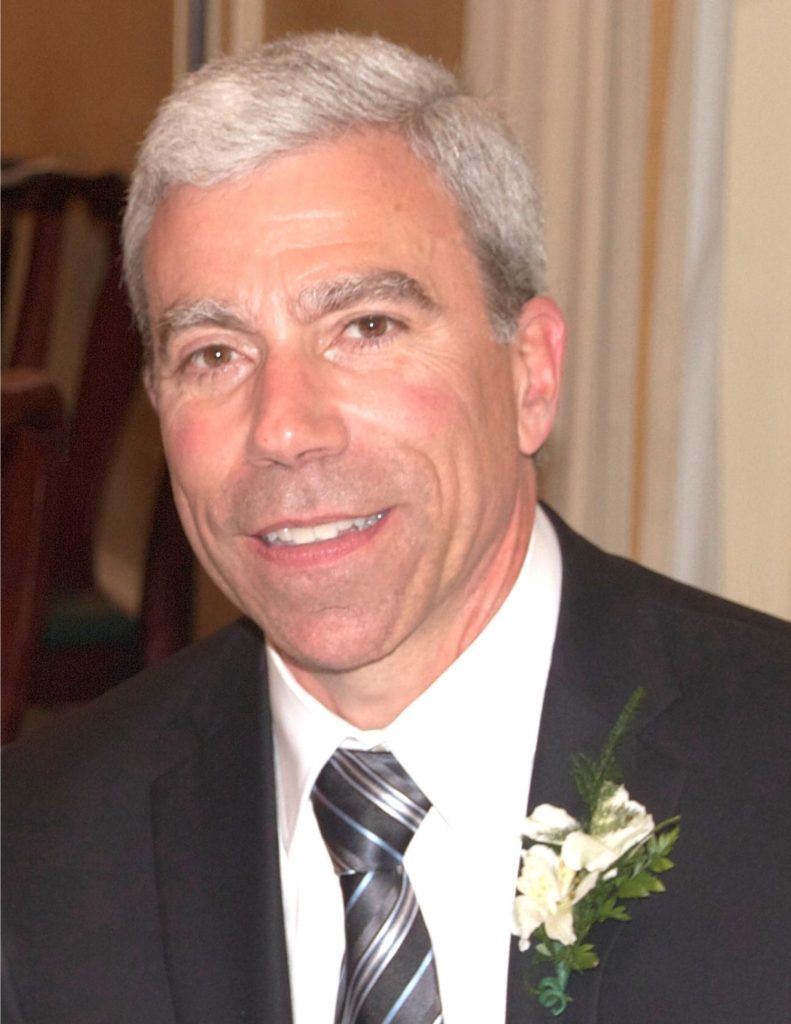
Paul Hershey works for Raytheon Technologies Company, where he is a Principal Engineering Fellow focusing on data analytics, autonomous systems, modeling and simulation, and cyber security. He has been a member of IEEE since 1980 and was elevated to IEEE Fellow in 2021. He received his Ph.D. and M.S. degrees in electrical engineering from the University of Maryland, College Park, MD, USA, and the A.B. degree in mathematics from the College of William and Mary, Williamsburg, VA, USA. Dr. Hershey has published 39 patents (granted) and over 60 peer-reviewed technical articles. Previously, he was an adjunct professor at George Washington University where he also served on the Curriculum Advisory Board. He presently serves on technical program committees for the IEEE International Systems Conference and the IEEE International System of Systems Engineering Conference. Dr. Hershey is a Distinguished Lecturer on data analytics for the IEEE Systems Council.
Deep Learning with MATLAB
Speaker: Aycan Hacioglu
Deep learning can achieve state-of-the-art accuracy for image segmentation and classification, speech recognition and enhancement, predictive maintenance, and many other domains. This machine learning technique has been adopted across many different industries, including automated driving, aerospace design, medical diagnostics, industrial automation, energy forecasting, and robotics. This session will feature industry examples, a deep learning workflow overview, and an update on the latest Artificial Intelligence capabilities available in MATLAB that help overcome common implementation challenges.
Highlights include:
· Managing, automated labeling, and augmenting large data sets (images, signals, text, etc.)
· Utilizing intuitive interfaces to easily create, visualize, analyze, and train networks or manage multiple experiments
· Leveraging pre-trained models (e.g. GoogLeNet and ResNet) and imported models from Keras-TensorFlow, Caffe, and the ONNX Model format for transfer learning Speaker Bio:

Aycan Hacioglu is a Customer Success Engineer at MathWorks. She has a BS in Chemical Engineering from Bogazici University, Turkey and a jointly awarded Ph.D. in Chemical Engineering from the University of Florida and Universite Lille1-Sciences and Technologies, France. Before joining MathWorks, she was an Assistant Teaching Professor at the Chemical Engineering Department of the University of Missouri for 3.5 years. She extensively used MATLAB for fluid dynamics and mass transfer simulations. She is experienced in mathematical modeling, process simulations, numerical methods and perturbation theory. She also integrated MATLAB to separation processes and transport phenomena courses she taught. She is excited to share her experience and passion to use MathWorks products in academia.
Learning Dynamics by Smart Systems
Speaker: Hsiao-Chun Wu, Ph. D., Professor of Electrical and Computer Engineering, Louisiana State University, USA
How to construct a dynamic system has been appealing to researchers in physics, applied mathematics, computer science, and engineering since it can facilitate system identification, trajectory tracking, and time series forecast. In recent years, advanced smart systems capable of identifying dynamics inherent in the observed data are in high demand as they can enable the machine intelligence for predicting and detecting human behaviors and environmental evolution. According to our recent studies, the time series can be transformed into critical homological structures and/or features such that robust machine learning can be established using the homological analysis, especially for classifying, detecting, and predicting object motions, human behaviors, and fundamental characteristics in time varying (dynamic) signals. The conventional statistical signal processing and machine learning approaches are often under the unrealistic assumption of i.i.d. (statistically independently and identically distributed) data and thus the dynamics across data samples are not allowed. Based on the aforementioned new machine learning paradigm, it is possible to convert any non i.i.d. time series resulting from a Markov process to a neat geometric structure so the detection. prediction, and classification can be accurately fulfilled. In this talk, the mathematical framework and algorithms of the advanced homological analysis to learn dynamics by smart systems will be introduced and then the corresponding effectiveness on several practical applications will be demonstrated.
Speaker Bio
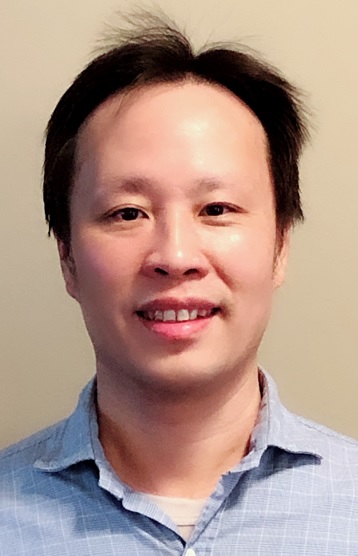
Hsiao-Chun Wu graduated from University of Florida in 1999 with a Ph. D. degree in Electrical and Computer Engineering, where he started to dedicate research on Signal Processing under the guidance of Dr. Jose C. Principe. Since March of 1999, he had joined Motorola Personal Communications Sector research labs and gotten involved with the ongoing research for Motorola VR Lite speech recognition software. His research in Motorola included novel robust speech detection and enhancement algorithms in a wide variety of background noise. In January of 2001, he joined the faculty at the Department of Electrical and Computer Engineering, Louisiana State University as a tenure-track assistant professor; he became a tenured associate professor in 2007. In July to August 2007, Dr. Wu was a visiting assistant professor at Television and Networks Transmission Group, Communications Research Centre, Ottawa, Canada. From August to December 2008, he was a visiting associate professor at Department of Electrical Engineering, Stanford University, California, USA. His current interests are in graph-based algorithms, topological analysis, finite-field transforms, audio/speech signal processing, image processing, neural-networks/artificial-intelligence, pattern recognition and machine learning, wireless systems, wireless communications, intelligent systems, robotic technologies, indoor and outdoor localization/ranging/navigation mechanisms, non-destructive evaluation for material, civil, and mechanical structures, and biometric instrumentation. Dr. Wu has published more than 270 refereed journal and conference papers in signal processing, broadcasting, wireless communications, computer, electronics, sensor networks and ultrasonics areas (more than 230 of them are published by IEEE or ACM). He has ever served on twenty journal editorial boards in the area of electrical and computer engineering including IEEE Transactions on Signal Processing, IEEE Transactions on Mobile Computing, IEEE Transactions on Wireless Communications, IEEE Transactions on Broadcasting, IEEE Transactions on Vehicular Technology, IEEE Communications Magazine, IEEE Communications Letters, IEEE Signal Processing Letters, etc. From 2009 to 2011, he has been serving on IEEE Multimedia Technical Committee. Dr. Wu is currently an IEEE Distinguished Lecturer and an IEEE Fellow of Class 2015.
A security-by-design approach to IoT deployment in power sector
Speaker: Dr Jolly Wong CEng FIET CITP FBCS
Internet of Things (IoT) has huge potential to significantly transform the industrial sectors, including power sector. The McKinsey Global Institute predicts that potential economic impact of IoT will reach up to USD 11 trillion per year by 2025.
The power sector has been the beneficiary of some recognizable early consumer-oriented applications of IoT, such as smart meters. In Hong Kong, with our continuous drive for cost-effectiveness and efficiency through versatile engineering technologies and digital innovation, we envisage that the pace and scale of IoT deployment, through the installation of an advanced metering infrastructure (AMI) within Hongkong Electric to support our operations, will increase rapidly and aggressively over the next several years.
The smart meters and associated applications will provide 580,000 customers with more consumption details, facilitating them to optimize energy use so that appropriate measures can be taken to save energy. The move will help transform Hong Kong into a smarter city.
Pushing intelligence to the edge with IoT has no doubt drastically enhanced the cost-efficiency in automatic and self-sustaining business operations. However, it has also significantly increased the attack surface from a cybersecurity perspective as every point of connection that exists carries the risk of being hacked. IoT is indeed a double-edged sword.
While IoT helps many organizations improve operational efficiency in a way that was unimaginable even a decade ago; it also makes these organizations more susceptible to cyber-attacks. In order to maximize the benefits of leveraging IoT to achieve tangible operational efficiency gain while minimizing the risks particularly those related to cybersecurity vulnerabilities, there is a pressing need to establish a framework with practicable guidelines on cyber security for IoT.
The purpose of this workshop is to set out a practical framework with principles and specific guidelines to ensure that the security posture of various IoT devices deployed by Hongkong Electric is robust, resilient, and responsive to emerging threats.
Speaker Bio
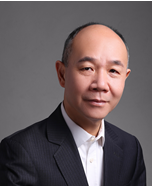
Dr. Wong is a technology consultant with over 30 years of experience working in public goods projects. As Chief Technology Officer at the Hong Kong Police Force (HKPF), he oversaw the formulation of policies and strategies of ICT imperatives and rollout of command and control communications systems which won him the Outstanding Contribution to TETRA (Critical Communications) Award in 2008.
He created the Finance-Operate-Own-Share (FOOS) business model, which successfully applied public and private partnerships to resolve major technological challenges in the HKPF. The model and its application have won awards like the Ken Goulding Prize for Professional Excellence 2015 and parts of the model has been replicated by organizations all over the world.
Between 2015 and 2017 Dr Wong was a member of the Advisory Committee on Innovation and Technology, the body that wrote the ‘Smart City’ blueprint for innovation and technology development for the HKSAR Government. In January 2021 he became the Senior Adviser for Hongkong Electric Company Limited (HEC) on technology policy and strategy related to innovation and cybersecurity. HEC is a utility providing a safe and highly reliable (at rating over 99.9999%) electricity supply to over 580,000 households on Hong Kong and Lamma Islands.
Dr Wong is deeply involved with the Institution of Engineering and Technology (IET) and has served as its Vice President, Trustee, Council Chairman and Hong Kong Branch Chairman. He was the former Hong Kong Chapter Chair of the IEEE Engineering Management Society. He mentors STEM students as a Visiting Professor for Shanghai University and Beijing University of Posts and Telecommunications, and is also a Policy Fellow for the Centre for Science and Policy (CSaP) at University of Cambridge.
Clean Transportation Planning, Research, and Development at the California Energy Commission
Speakers: Kiel Pratt & Ben Wender
California is a leader in policies and programs to mitigate the impacts of climate change, reduce harmful emissions, and protect the health of all Californians through rapid transitions to zero-emission transportation and electricity systems. In September 2020, Executive Order N-79-20 established statewide targets for 100 percent of new passenger vehicle sales, all drayage truck operations, and all off-road equipment operations where feasible to be zero-emission by 2035, followed all medium- and heavy-duty vehicle operations by 2045 where feasible. At the same time, Senate Bill 100 calls for 100 percent of retail electricity sales to come from renewable and zero-carbon resources by 2045. The California Energy Commission (CEC) runs numerous programs to help plan for and develop the technologies to enable the simultaneous evolution of the transportation and electricity systems. This presentation will provide an overview of relevant state policies, share recent analyses quantifying the number of chargers and associated electric infrastructure required to reach policy targets, and review CEC-funded technology research, development, and demonstration projects focused on vehicle-grid integration and the use of distributed energy resources to support electric vehicle charging.
Speakers Bio:
Kiel Pratt supervises a unit within the CEC’s Fuels and Transportation Division supporting California’s transition to zero-emission transportation. The team, the Vehicle-Grid Integration Unit, coordinates analytical work to leverage clean energy investments and cutting-edge modeling to help bring about a future where electrified transportation moves people and goods more conveniently than ever, and where electrified transportation is part of a carbon-neutral, reliable, and resilient energy system. Kiel holds a Bachelor of Science degree in mathematics and a minor in music from Cal Poly at San Luis Obispo.
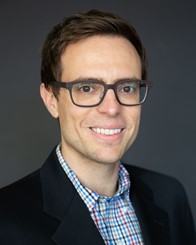
Ben Wender is an Electric Generation System Program Specialist in the Research and Development Division at the CEC, where he manages the transportation electrification portfolio for the Electric Program Investment Charge (EPIC) program. EPIC funds more than $130M per year in competitive research awards across numerous clean energy technologies. Prior to working at the CEC, Ben worked for five years at the National Academies of Sciences, Engineering, and Medicine’s Board on Energy and Environmental Systems where he managed studies related to electric system resilience, grid modernization, and vehicle fuel economy technologies. He received a MS and PhD from Arizona State University in Civil, Environmental, and Sustainable Engineering.

Fog/Edge Computing, 5G overview and 6G Initiatives
Speaker: Zhensheng Zhang
Recent deployment in the internet to support Internet of Things (IoT) includes cloud computing and fog computing. Fog/Edge computing is a disseminated computing infrastructure in which application and its services are handled either at the network edge or in a remote data center- cloud. Fog computing improves efficiency and trim the amount of data that requires to be transmitted for processing, analysis and storage by placing the data close to the end user. In this talk, we will have a high level overview of the basic infrastructure and platform Fog/edge Computing, review its architecture and key interfaces, highlight key differences between cloud computing and fog computing, discuss under which condition one is preferred than the other. Fifth generation (5G) communication networks are being deployed in many areas. We will review, at high level, the timelines and technologies used in 2/3/4/5G networks. If time permits, we will discuss/predict some of the 6G features/initiative.
Speaker Bio:
Dr. Zhensheng Zhang received his Ph. D. in Electrical Engineering from UCLA. He has over twenty five years’ experience in design and analysis of network architecture, protocols and control algorithms, of the communication networks. He has worked at Cubic Corporation, Boeing, Bell Laboratories, Lucent Technologies, and Columbia University, respectively, focusing on research and development in wireless networks. He has published over 100 technical papers in IEEE Journals and key IEEE conferences (one paper was listed as the top 10 most reading articles from IEEE Communications Society website in 2007). He was IEEE Comsoc distinguished lecturer (2010-2013), the IEEE LATINCOM Keynote Speaker (2013); received the IEEE Regional/Area Outstanding Engineer award in 2011. He is an IEEE Fellow.
He has been very active in IEEE Comsoc in the past decade, some of his roles include:
Member-at-Large (MAL), IEEE comsoc Board of Governors (B0G), 2021-2023
Director, Membership Service (Comsoc BoG) 2016-2017,
IEEE 5G summit San Diego 2019 General co-Chair,
IEEE San Diego Section chair 2021,
Globecom 2012 TPC Chair; Globecom 2015 Executive Vice Chair;
Board Member, North America Region (NAR), 2008-2015; 2018-2021;
IEEE ICC 2015 TPC vice Chair;
Editor, IEEE Transactions on Wireless Communications (2000-2004).

Sponsors
MATHWORKS

Southern California Edison

Professional Society Sponsorship
IEEE Systems Council Chapter

IEEE Coastal Los Angele Section

IEEE Region 6

IEEE Power and Energy Society

IEEE Women in Engineering
AIChe LA/OC Section
CSULB IEEE Student Branch
CSULB AIChE Student Branch
College of Engineering, CSULB
Student Career and Development Center, CSULB
